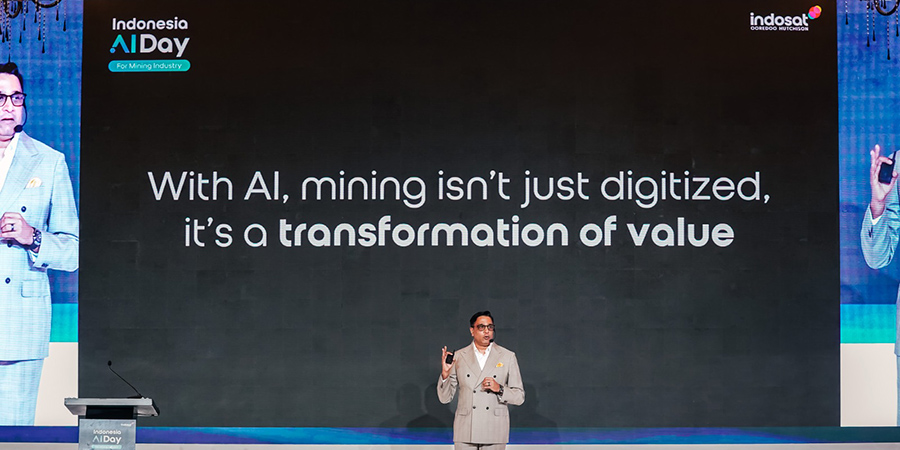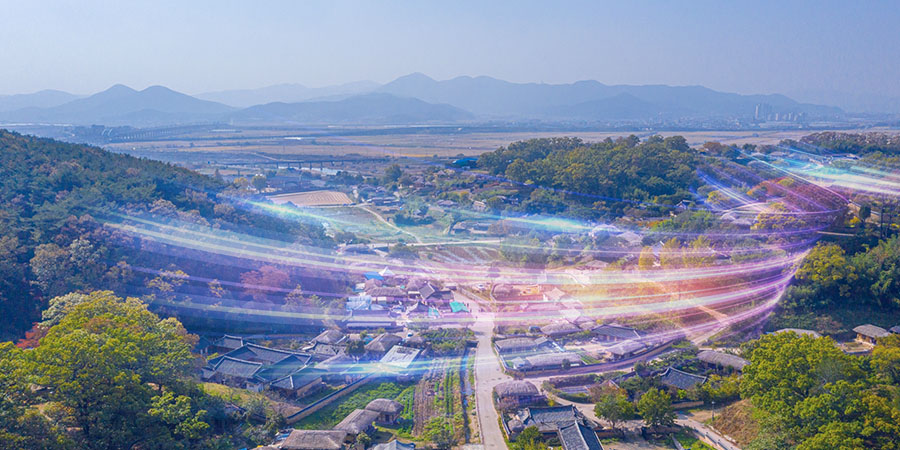Imagine a one-stop platform to access all government services – from birth records and tax transactions to updating information on one’s mortgage loans and healthcare benefits; a surveillance system to help emergency operators foresee the need to deploy rescue teams to different locations; or robots that can help recovering stroke patients exercise and remind those with early-stage dementia to take their medication.
These are just some of the promises of “Smart Cities,” which are being conceptualized and constructed to help develop more comfortable and livable communities.
According to the OECD-sponsored Emerging Markets Network, smart cities serve as a vital component of urban development. Cities and countries can apply smart services and smart technologies to create more efficient and livable urban environments, strengthen economic growth, promote well-being and enable citizen engagement.
Governments across the globe are actively seeking solutions to balance social, technological and economic growth. Many have started to develop smart city projects by investing in IT infrastructure and integrating innovative solutions in urban planning.
According to a 2019 study by UNESCO, Asia Pacific alone is predicted to account for 40% of the global smart city investments, or US$800 billion, by 2025.
In Southeast Asia, the idea of smart cities is seen as a viable solution to the growing urban development that confronts and challenges many countries here, especially given the fact that about 70 million people are expected to migrate to urban areas by 2025.
The “Smart” concept is perceived to address the increasing problems brought on by urbanization. For example, such an approach could generate a more efficient and productive job market, as Southeast Asia is indeed expected to contribute nearly 1.5 million jobs. In a smart city, tens of billions of dollars could be saved annually as smart solutions are set to provide citizens with better housing options, lower energy bills and general household budget support.
Within the region, a newly formed collaborative platform, ASEAN Smart Cities Network (ASCN), aims to have regional members work together to achieve smart and sustainable urban development.
In other Asian countries, South Korea’s smart-city policy has seen advancement as both local and national governments have been active in its promotion. According to the South Korean Smart City government website, 78 local governments nationwide have formed specific organizations for smart-city projects.
Meanwhile, Japan is now moving forward with what it dubs Society 5.0 – its new blueprint for a super-smart society. This project promises a sustainable socio-economic system for all with the use of digital technologies including AI, IoT and robotics.
And China, which is now leading the world with its smart city developments, is also delivering its concept to the forefront of urban planning across the country and in full support of its citizens’ well-being.
As more countries embrace digital transformation, governments have also started charting roadmaps for their own smart cities. Here are some of the notable smart city-projects by different countries in Asia.
Japan
Some of the concerning social challenges that Japan is facing these days are the increase in its aging population, the decline in its birth rate, and the resulting lower numbers of the working-age population. These problems have led the Japanese government to rethink how it can continue to enable and promote a more livable society.
Japan is thus seeking to turn Society 5.0 into a reality.
As an updated blueprint for the country’s super-smart society, Society 5.0 plans to completely transform the Japanese way of life by breaking the barriers between cyberspace and physical space.
With Society 5.0, the government envisions, among other things, self-driving cars and drones to deliver goods and services to residents in the least populated areas; remote medical consultation and robot-administered care for residents in nursing homes; and various energy supply and delivery options available to towns to meet their specific needs, no matter how far.
What was once merely a vision is today becoming reality in some cities and towns across the country, a testament to both the government and private entities working together.
Fujitsu is currently involved in projects aimed at the development of smart cities and smart communities in more than 20 regions.
One of them is in Aizuwakamatsu City, which is in the Fukushima disaster area. Fujitsu cooperated with the city government and a local electricity provider. The company plans to build an ICT platform to support widespread interest in renewable energy while contributing to and stimulating the local economy.
Panasonic, meanwhile, built the Fujisawa Sustainable Smart Town, located just 50 kilometers south of Tokyo near the town of Fujisawa. Situated on the site of a former manufacturing facility, it was the first of three sustainable smart communities that opened in Japan.
Among the continuing goals of this community is energy self-sufficiency, achieved by using solar power and other natural energy sources. In addition, residents there are also highly encouraged to minimize their waste and are provided access to apps that show their consumption levels along with tips on waste reduction.
Another smart city in the works is Fukuoka, which is planning to implement automation by AI automation and robotics, a focus that could introduce innovative concepts such as self-driving cars. Further, to streamline its healthcare system, Fukuoka proposes to advance telemedicine through enhanced communication networks and highly developed image and sound transfer, allowing remote yet thorough health examinations.
The Japanese government has developed a Smart City Reference Architecture framework to ensure smart cities develop in ways consistent with the principles of citizen-centricity, interoperability and sustainability. NEC has been deploying its own City OS platform, with its proprietary tech in biometrics, AI data analytics, ID management systems and full-layered security, which in conjunction with FIWARE can deliver unique solutions to regional social issues.
South Korea
The South Korean government is allocating a budget of $366 million to help its own companies secure orders related to smart-city projects.
The development of inclusive smart cities here is the government’s response to many of the country’s urban problems. It aims to establish a digital ecosystem and boost global cooperation using the innovative technologies of the 4th Industrial Revolution.
Each of the 78 local governments across the country has formed specific organizations for smart city projects, and they are now scaling up those initiatives.
According to its portal, the national government is also developing national pilot cities on greenfield land, such as Sejong and Busan.
The country will be using new technologies including AI, blockchain and 5G to develop innovative solutions such as drones, self-driving cars and smart energy.
The smart city to be built in Sejong has a concept that is AI-based. It aims to transform the citizens’ daily lives in various ways, including healthcare, mobility, education, jobs and energy, among others.
As one such example, Sejong plans to promote mobility-as-a-service by innovating a platform that optimizes transfers between different modes of transportation.
Meanwhile, the Busan pilot city will promote the concept of data and augmented reality. It is developing a state-of-the-art waterfront city focused on 10 factors, including water technology, energy and robotics. Among its goals is to produce its own energy by way of renewable energy sources. And its advanced smart-water technology will allow citizens to practice 100% water recycling using innovative solutions.
China
China is now embarking on an astounding 500 smart-city developments, which account for almost half of the world’s total.
Such aggressive implementation is to address the potential challenges that the country could be facing in the coming decades. A study by the World Resources Institute indicates that China’s population is predicted to almost double in the next 30 years, with nearly one billion more vehicles added to urban areas by then. China is also likely to experience an infrastructure problem as it looks to settle 300 million new migrants in its cities, a growth which will, in turn, add to problems like pollution, healthcare woes and demographic issues.
The country’s technology hub of Shenzhen has already foreseen these urban challenges and is making great strides in translating its smart-city ideas into reality. It has, in fact, become a benchmark for smart cities across the globe, as evidenced by its receiving the Global Enabling Technologies Award from the United Nations Human Settlements Programme (UN-Habitat) and the World Economic Forum in 2020.
Shenzhen started introducing its smart-city concept as early as 2010, and the Shenzhen-based technology giant, Huawei, was the first technology firm to join the smart-city field.
Its development of smart infrastructure has delivered a wider range of smart services to its citizens and enterprises.
One of them has been autonomous driving. Data from the city government suggests that by the end of 2021, Shenzhen had opened roads stretching 145 kilometers for its autonomous driving tests.
Shenzhen is the first city in China to introduce regulations on fully autonomous, driverless vehicles. It has, so far, issued 93 licenses, including 23 for driverless tests with passengers.
To build an ideal smart city, Shenzhen has also combined its main infrastructure and city services. It has already employed a series of projects for its residents, providing smart technology to the transportation, healthcare, education and maritime sectors, as well as the entire community.
The city also boasts a cutting-edge water management strategy; the Shenzhen Water Bureau has applied water informatization to bring enhanced water management and water project construction.
Together with Huawei, it will develop a smart reservoir management platform to carry out automatic monitoring, alarm reporting and the smart management of reservoirs. Advanced technology such as 5G-driven drone boats and AI tools will be used for the maintenance of the reservoirs.
In terms of major urban transportation projects, the city will also open metro lines that will pioneer the use of computing and big data technologies to implement various subway service systems within the urban rail transit industry in the country.
When it comes to healthcare, a number of hospitals in the city can now enable online consultation services, and 22 have been granted an internet hospital license to deliver further consultation services for common and chronic diseases.
The Shenzhen government is also promoting the advancement of personalized services such as online deliveries of medicines, online home doctors and Internet+ medical care to allow citizens to have quicker and more convenient access to medical services in the comfort of their homes.
Singapore
This is how the Singaporean government envisions the city-state to be.
The future is on for Singapore as it continues to forge ahead with its smart-nation development.
Dubbed the smartest city in the world for three consecutive years by the IMD Smart City Index, Singapore boasts 94% digital government services from end to end.
Among the factors that have made Singapore’s smart-nation initiatives a success are its application of big data for urban planning and resource management, its successful implementation of citizens’ digital ID and its fast-growing fintech ecosystem .
Singapore’s Strategic National Projects serve as the basis for realizing its smart-city vision.
The city-state now has the GoBusiness platform for enterprises across the country to access government e-services and resources.
To allow for more efficient and faster digital services, it also has a digital program it calls CODEX shared between government and private entities.
Singapore has also streamlined its financial transactions by continuing to develop a simpler and more secure digital platform that works across different systems.
Furthermore, it has introduced Smart Urban Mobility, in which digital technologies find intelligent solutions that improve its public transport system.
Singapore’s smart-nation initiative additionally transforms the lives of its citizens by digitalizing healthcare. Its HealthHub now allows citizens access to all health records, while its Assistive Technology and Robotics in Healthcare features robotics and assistive tech that deliver solutions to better enable more mobility for the elderly and those with disabilities. Singaporeans can also access health care services remotely and manage their healthcare through its TeleHealth platform.
Moreover, Singapore has also ensured that technology is made accessible and available to all. The Singpass can now be used to access more than 2,000 services to more than 4.5 million users; it is also accepted at all government counters and is now available in all four official languages. The LifeSG app, meanwhile, delivers a one-stop platform for accessing over 100 government services.
To guarantee the necessary protection and security of all personal data from all cyberattacks, Singapore trained more than 450 officers from 33 agencies in the first whole-of-government ICT Data and Data Crisis Management Exercise in 2021. The knowledge garnered from that forum continues to be implemented today.
More cities in the region are expected to emerge as heralded smart cities globally. Among the most notable, Thailand earmarked $37 billion for its smart city near Bangkok and has already secured billions in investment pledges from global automotive, healthcare and logistics and robotics companies.
The Philippines is also starting to turn its smart-city dream into reality. Its ICT authority has said that locations outside of the regional capital of Metro Manila have set goals to develop more than a hundred thousand local jobs in their respective cities by 2025.
And Malaysia is also following its neighbors in developing smart cities in the country. The Malaysian government aspires to have a smart city that is powered by ICT, technology and innovations to resolve urban challenges, enhance the quality of life, foster economic growth, promote efficient urban management practices and much more.
In addition to being an impressive concept to address many urban development challenges worldwide, policymakers believe that the efficiency of these smart cities will only be successful by improving the quality of life of their people.







